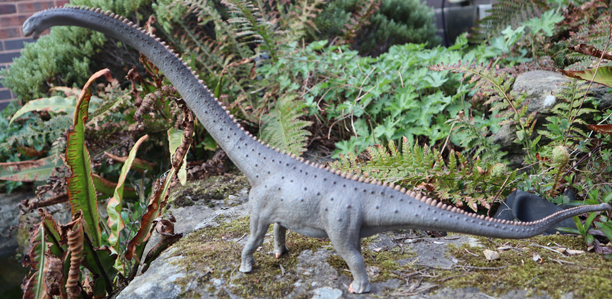Huge Dinosaur Footprints Trap Smaller Dinosaurs
A multi-national team of palaeontologists have published a new paper providing fresh insight into a bizarre dinosaur discovery in China – a vertical bone bed. Canadian researchers aided by scientists from America and China have been painstakingly piecing together the story surrounding the remarkable find of several theropod dinosaur skeletons that seemed to have become trapped on top of each other.
The fossil site is in the Dzungaria area of northern China and over the period between 2001 and 2005 several vertical pits have been excavated with many containing the remains of small meat-eating dinosaurs preserved in a heap, with one carcase on top of other fossilised remains. The key to unlocking what had actually happened 150 million years ago (Late Jurassic) has taken several years of research, but a new paper published in the scientific journal Palaios offers a remarkable explanation.
These pits into which these unfortunate dinosaurs fell, were not natural depressions, but the remnants of huge footprints left by a sauropod as it rumbled on by. The strata indicates that the ground was very soft and there was lots of volcanic ash around as a result of a recent eruption. One small bipedal dinosaur fell into a footprint and became trapped in the soft, volcanic mud. This attracted the attentions of other meat-eaters who one by one came to inspect the pit, hoping for an easy meal.
These animals too, became trapped and unable to escape. Over time a sort of pyramid of theropod bodies built up and this is the way they have remained until the scientists began to piece together this amazing fossil puzzle.
The remains of an adult and an immature Guanlong (a primitive crested tyrannosaur) and two unknown ceratosaurs have been recovered, along with the fossils of at least 18 other individuals in the three pits that the team excavated. The pits themselves are up to 2 metres deep and the scientists have speculated that they were made by a Mamenchisaurus (20-metre-long sauropod). Fossils of Mamenchisaurus have been found nearby.
A Replica of a Mamenchisaurus (CollectA Deluxe Model)
Picture credit: Everything Dinosaur
To view the range of CollectA Deluxe scale models in stock at Everything Dinosaur: CollectA Deluxe Prehistoric Animal Models.
Dr David Eberth of the Royal Tyrrell Museum in Alberta (Canada) stated:
“None of us had ever seen anything like this before. In most bonebeds, remains are scattered across flat surface these skeletons were stacked one on top of another, in what appeared to be pits full of volcanic mud.”
Evidence showed the small theropods became stuck in the mud-filled footprints of the larger dinosaur and died. The high quality of the preservation of the remains indicated that these dinosaurs were buried within days to months of dying and then more creatures would become stuck above them, successively burying the dinosaurs.
Dr Eberth added:
“Discovering that the preservation of these skeletons was attributable to the track-making of a giant, long-necked dinosaur was simply bizarre.”
This discovery may have implications for other dig sites, as if researchers could locate large amounts of bone in these sauropod made “predator traps”, it would cut down the time taken to extensively survey each dig site.







Leave A Comment